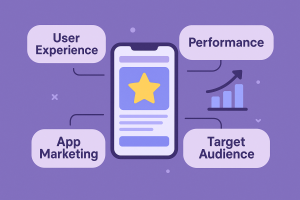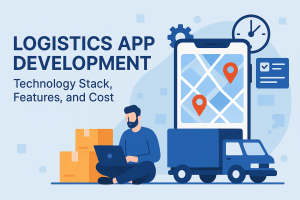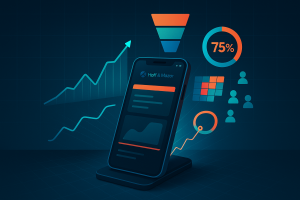In an era where sports fans are increasingly looking for new ways to engage with their favorite teams and players, fantasy sports apps have risen to prominence. These platforms enable users to draft virtual teams, compete with friends or strangers, and track real-time statistics—all from the convenience of a smartphone or tablet. As user bases grow and expectations increase, Fantasy Sports App Development is no longer just about functionality; it’s about building a scalable, robust product that can handle heavy traffic, complex real-time data processing, and a global user community. This article provides a comprehensive guide on how to create a fantasy sports app that remains reliable, fast, and adaptable, even as your user base skyrockets.
Whether you’re a startup founder, an established business looking to diversify, or a technical enthusiast eager to understand the nuances of app development, this guide will walk you through every aspect of building a scalable fantasy sports application. From understanding user needs to selecting the right tech stack, we’ll cover the best practices and considerations at each phase of development. Along the way, we’ll highlight relevant resources and proven strategies to ensure that your product stands out in a crowded market.
Why Fantasy Sports Apps Are So Popular
Fantasy sports apps have revolutionized the way fans interact with the sports they love. Instead of passively watching games, users can take on the role of a virtual team manager, drafting players, making trades, and competing for bragging rights or cash prizes. This heightened sense of involvement and competition drives strong user engagement, leading to higher retention rates compared to many other types of mobile applications.
Moreover, the fantasy sports ecosystem appeals to a wide demographic—from casual fans to hardcore sports enthusiasts. This broad audience, combined with an increasing global interest in various sports leagues, creates a fertile market for new entrants. However, with great opportunity comes stiff competition. Launching a fantasy sports app that resonates with users and remains reliable during peak usage requires thoughtful planning, robust architecture, and continual updates.
Core Features of a Fantasy Sports App
Before diving into the specifics of scalability, it’s crucial to understand the essential features that any successful fantasy sports app should include:
- User Registration and Profiles
Users should be able to sign up quickly via email or social media. Comprehensive profiles that allow for custom avatars and team names add a personal touch. - League Creation and Management
Enable users to create or join leagues with friends or random players. Tools for drafting players, setting lineup changes, and handling trades are critical. - Real-Time Scoring
Live updates on player performances, scores, and standings keep users glued to the app. This feature is a significant driver of user engagement. - Player Stats and Analytics
Offer detailed statistics, player news, and performance analytics to help users make informed decisions. - In-App Communication
Chat rooms, forums, and private messaging options facilitate community building and enhance the competitive spirit. - Payment Gateways
Integrations for paid leagues, entry fees, or in-app purchases open up monetization opportunities. Make sure payment processing is secure and user-friendly. - Push Notifications
Timely alerts about injuries, lineup deadlines, or scoring changes can significantly improve user engagement. - Social Sharing
Encouraging users to share their achievements or invite friends via social media can organically expand your user base.
Scalability: What It Really Means
Scalability is the ability of your application to handle increasing workloads—more users, more data, and more transactions—without sacrificing performance or reliability. For fantasy sports apps, scalability often comes into play during peak times, such as major sports events or draft seasons, when user activity can surge dramatically.
Vertical vs. Horizontal Scaling
- Vertical Scaling: Adding more resources (CPU, RAM) to your existing server.
- Horizontal Scaling: Distributing the load across multiple servers or instances.
Most modern apps rely on a combination of these strategies, along with cloud services that allow for on-demand resource allocation.
Importance of Scalability in Fantasy Sports
A fantasy sports app experiencing downtime or slow response times during critical moments (like game days) can lead to frustrated users and negative reviews. In a competitive market, even a single outage can cause users to migrate to alternative platforms. Hence, investing in a robust, scalable infrastructure isn’t optional—it’s a necessity.
Planning Your Fantasy Sports App
The success of any development project starts with meticulous planning. This involves defining your target audience, setting clear goals, and understanding the competitive landscape.
Market Research
Begin by analyzing existing fantasy sports apps. Identify gaps in features, user complaints, and unique selling points of successful platforms. This will guide you in creating a product that addresses unmet needs.
Feature Prioritization
You may have a laundry list of features, but not all of them need to be in your minimum viable product (MVP). Start with the core features essential for user engagement and gradually add advanced functionalities as you receive user feedback.
Budgeting and Timeline
Building a fantasy sports app can be resource-intensive. You’ll need to budget for development, testing, marketing, and ongoing maintenance. If you’re concerned about costs, you might consider exploring Offshore Mobile App Development services for a more budget-friendly approach. Meanwhile, keep a realistic timeline that accounts for unexpected delays and iterative improvements.
Team Composition
A typical development team might include front-end developers, back-end developers, UI/UX designers, QA testers, and a project manager. If you prefer a more localized approach, you could look into App Developers Near Me for convenient collaboration and face-to-face interactions.
Choosing the Right Tech Stack
Selecting the proper technology stack is a foundational decision that impacts your app’s performance, maintainability, and scalability. Popular choices for fantasy sports apps often involve:
- Front-End:
- React Native: Enables cross-platform development for iOS and Android.
- Flutter: Google’s UI toolkit for building natively compiled applications.
- Back-End:
- Node.js: Known for handling real-time applications efficiently.
- Python (Django/Flask): Offers a rich ecosystem of libraries for data analytics and web development.
- Ruby on Rails: Convention over configuration approach speeds up development.
- Database:
- SQL Databases (MySQL, PostgreSQL): Ideal for structured data and transactions.
- NoSQL Databases (MongoDB, Redis): Good for handling unstructured data and caching.
- Cloud Services:
- AWS or Azure: Provide on-demand scalability, managed databases, and serverless computing.
To gain a deeper understanding of the best technologies for your project, consult resources like the best app development software guide, which explores various platforms and tools to suit different development needs.
Building a Solid Backend Architecture
The backend of a fantasy sports app handles critical functions such as user authentication, real-time data updates, and interactions with third-party sports data APIs. Here’s how to structure a scalable backend:
Microservices Approach
Breaking down your application into smaller, independent services (user service, league service, scoring service) allows each component to be scaled individually. This architecture also simplifies maintenance and debugging.
Load Balancing
Distribute incoming traffic across multiple servers to prevent any single node from becoming a bottleneck. Modern load balancers can automatically reroute traffic if one server fails, ensuring high availability.
Caching Layers
Real-time data is crucial in fantasy sports. Using caching solutions like Redis or Memcached can drastically reduce response times and lighten the load on your primary database.
Monitoring and Logging
Implementing robust monitoring (using tools like Grafana or Prometheus) and logging frameworks helps identify performance issues before they escalate. Detailed logs also aid in diagnosing user-reported problems.
Front-End Development Best Practices
While the backend ensures the app runs smoothly, the front-end is what users see and interact with. A clean, intuitive interface can make or break your user experience.
Responsive Design
Fantasy sports apps must look and feel great on various screen sizes, from smartphones to tablets. Ensure that your UI elements scale gracefully, and always test across multiple devices.
Smooth Animations and Transitions
Micro-interactions, such as animations when switching tabs or drafting a player, enhance user engagement. However, be mindful of performance overhead.
Offline Functionality
Implement caching for certain features to allow users to view data even without an internet connection. This can be especially useful for referencing past stats or league standings.
Testing Early and Often
Use frameworks like Jest or Cypress for automated front-end testing. Catching UI bugs during development is much easier and less costly than dealing with them post-launch.
Real-Time Data and Live Updates
The essence of a fantasy sports app lies in delivering real-time updates on player performance and scores. Achieving this requires a robust data pipeline capable of handling spikes in traffic, especially during game days.
Data Sources
Most fantasy sports apps rely on third-party APIs for real-time sports data. Ensure that your chosen API provider is reliable, has a track record of minimal downtime, and offers the depth of data you need.
WebSockets vs. HTTP Polling
- WebSockets: Maintain an open connection for real-time communication, ideal for live score updates.
- HTTP Polling: Sends periodic requests to the server. This method is simpler but can be less efficient under heavy loads.
Graceful Error Handling
APIs can sometimes go down or respond with errors. Implement fallback mechanisms to display partial data or cached results, rather than leaving users in the dark.
Ensuring Performance Under Heavy Load
Performance bottlenecks often surface during peak usage—like major sports events or playoffs. A well-architected system can handle these surges gracefully.
Stress Testing
Simulate high-traffic scenarios to identify weak points. Tools like JMeter or Locust can help you load test your system, revealing bottlenecks in the database, network, or application layer.
CDN Integration
Serving static assets (images, CSS, JavaScript) through a Content Delivery Network (CDN) can drastically reduce latency. CDNs cache your content in servers distributed across the globe, delivering data from the nearest location to each user.
Auto-Scaling
Configure your cloud services to automatically spin up new server instances when CPU or memory usage crosses a certain threshold. This ensures that your app remains responsive even if user numbers suddenly double or triple.
Monetization Models for Fantasy Sports Apps
Monetization is crucial to recoup development costs and sustain your business. Common strategies include:
- Entry Fees and Cash Prizes
Users pay to enter contests, and winners receive cash or other rewards. This model is popular but requires compliance with local gambling laws. - Freemium Model
The basic app is free, but users can purchase premium features like advanced analytics, custom avatars, or ad-free experiences. - Advertisements
Banner ads or sponsored content can generate revenue without charging users. However, excessive ads can hurt the user experience. - Subscription Plans
Offer monthly or yearly plans that provide additional functionalities, such as in-depth player stats or exclusive competitions.
Selecting the right monetization model depends on your target audience and regional regulations. Some jurisdictions have strict rules around fantasy sports contests and prize money, so legal consultation is advisable.
Security and Compliance Considerations
Fantasy sports apps handle sensitive data, including user credentials, payment details, and personal information. Ensuring robust security measures is both an ethical and legal requirement.
Data Encryption
Encrypt data in transit (using HTTPS/SSL) and at rest (database encryption). Storing sensitive data in plain text can lead to catastrophic data breaches.
Secure Authentication
Use multi-factor authentication and implement session timeouts to minimize the risk of unauthorized access. Regularly update and patch any libraries or frameworks that handle authentication.
Regulatory Compliance
Depending on your region, you may need to comply with laws like the General Data Protection Regulation (GDPR) in the EU or other data protection regulations. Non-compliance can result in hefty fines.
Fraud Detection
Fantasy sports platforms can be targets for fraud, such as multi-accounting or payment scams. Monitor user activity and use automated systems to flag suspicious behavior.
Team Setup: Hiring Strategies and Collaboration
Building a scalable fantasy sports app is a multidisciplinary effort. You’ll need skilled developers, designers, data analysts, and project managers, among others. If you’re unsure where to find the right talent, resources like finding the best app developers near you can guide you to local expertise. Alternatively, you can hire mobile app developer teams from around the globe to fit your budget and technical requirements.
Local vs. Offshore
Local hires allow for face-to-face collaboration but can be more expensive. In contrast, partnering with international teams can reduce costs and provide a 24/7 development cycle. For instance, cost-effective offshore mobile app development strategies can help you balance quality with affordability.
Guides and Best Practices
If you’re new to this process, explore the guide to app developers near me benefits pricing hiring and trends. This resource delve into hiring strategies, budgeting, and team collaboration models.
Communication Tools
Regular communication is vital for a cohesive team. Tools like Slack, Trello, or Jira keep everyone aligned, from developers to stakeholders. Daily stand-ups and sprint reviews help track progress and resolve issues quickly.
Testing and Quality Assurance
Thorough testing is essential to catch bugs and performance issues before they affect end-users. Since fantasy sports apps involve complex real-time data and financial transactions, QA must be rigorous.
Types of Testing
- Unit Testing: Ensures each module or function works as intended.
- Integration Testing: Verifies that different modules interact seamlessly.
- Performance Testing: Gauges how the app behaves under high loads.
- Security Testing: Identifies vulnerabilities that could be exploited by malicious actors.
Beta Testing and Feedback
Consider releasing a beta version to a limited audience. This allows you to gather real-world feedback and refine features before the official launch. Encourage beta testers to report bugs, suggest improvements, and test the app’s scalability under controlled conditions.
Common Pitfalls
To learn from others’ mistakes, refer to the 5 common mistakes to avoid in mobile app development. Overlooking details like user experience, security measures, or proper QA can lead to costly fixes and user dissatisfaction down the line.
Maintenance and Continuous Improvement
The journey doesn’t end at launch. Post-deployment maintenance and ongoing improvements are crucial for retaining users and staying competitive.
Monitoring and Analytics
Implement analytics tools to track user behavior, engagement, and churn rates. This data informs updates and new features that keep your user base engaged.
Regular Updates
Frequent updates that address user feedback, add new features, and fix bugs show that you’re committed to delivering a high-quality product. These updates also serve as marketing touchpoints, reminding inactive users about your app.
Evolving Your Product
The sports landscape changes rapidly—players get injured, new leagues emerge, and user preferences shift. Keep your app relevant by adapting to these trends. For instance, you might introduce a new sport or add advanced analytics as user demand grows.
Future Trends and Innovations
Fantasy sports apps continue to evolve. Understanding upcoming trends can help you future-proof your platform.
- Augmented Reality (AR)
Imagine letting users project their fantasy team’s stats onto a live game broadcast. AR can create immersive experiences that elevate user engagement. - Blockchain and NFTs
Blockchain technology could enable transparent, tamper-proof record-keeping for player trades or unique digital collectibles. - AI-Driven Recommendations
Artificial intelligence can analyze past performance data to provide predictive analytics, suggesting optimal trades or lineup changes. - Global Expansion
As more countries embrace fantasy sports, building multi-lingual and multi-currency features can open up vast new markets.
For deeper insights into how technology is reshaping the sports and entertainment sectors, consult tech etruesports history reviews future trends. Staying abreast of these trends ensures that your app remains cutting-edge and competitive.
Conclusion
Fantasy Sports App Development is an exciting and lucrative venture, but it demands careful planning, robust technology, and ongoing dedication. By focusing on scalability from the outset, you ensure that your platform can handle the surge of new users, real-time data processing, and feature expansions without faltering under pressure. From selecting the right tech stack and building a solid backend architecture to implementing thorough QA and exploring future innovations, each step is critical in creating an app that stands out in a saturated market.
Ultimately, success in fantasy sports app development hinges on creating a user-centric, scalable platform. By prioritizing real-time performance, robust security, and continuous innovation, you can capture the passion of sports enthusiasts worldwide—turning casual fans into engaged, loyal users who keep coming back for more. If you maintain a forward-thinking mindset and adapt to emerging trends, your fantasy sports app can thrive in this dynamic, fast-paced industry.







